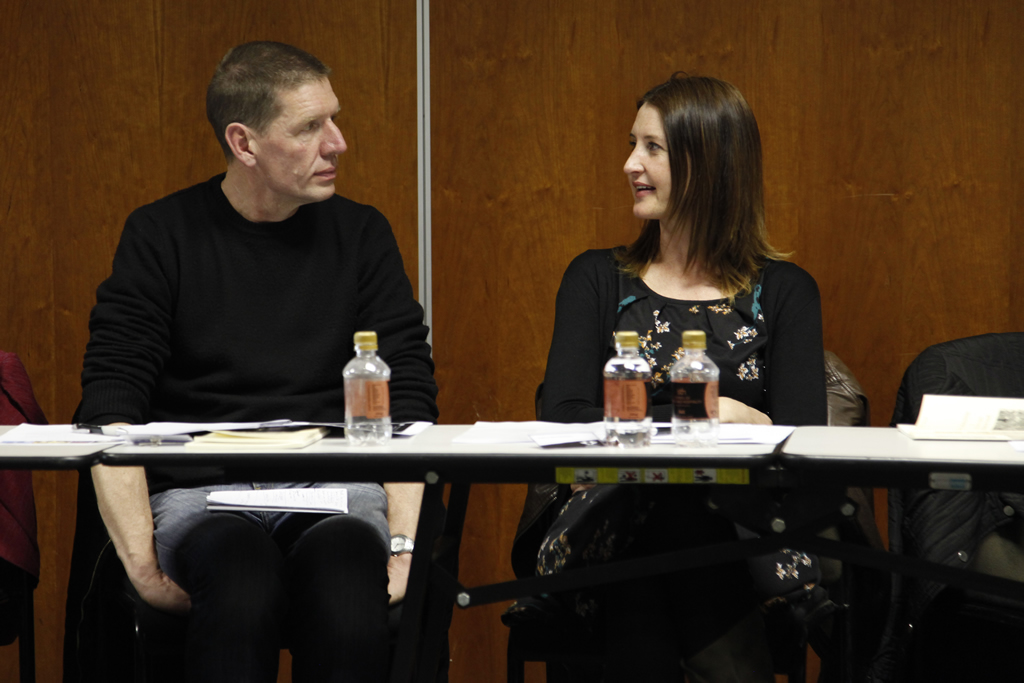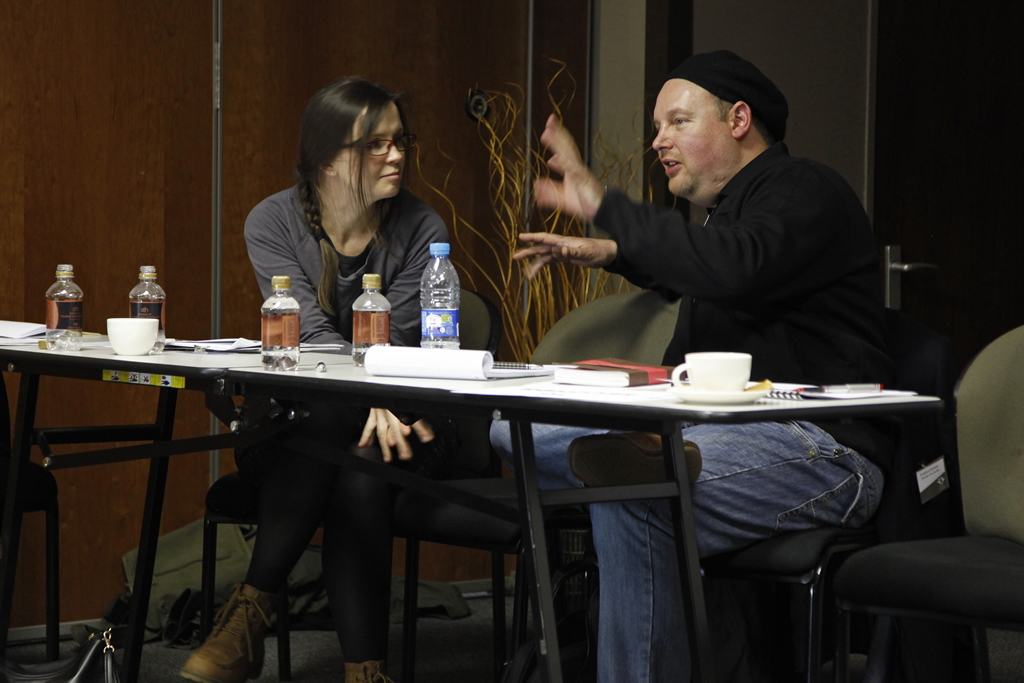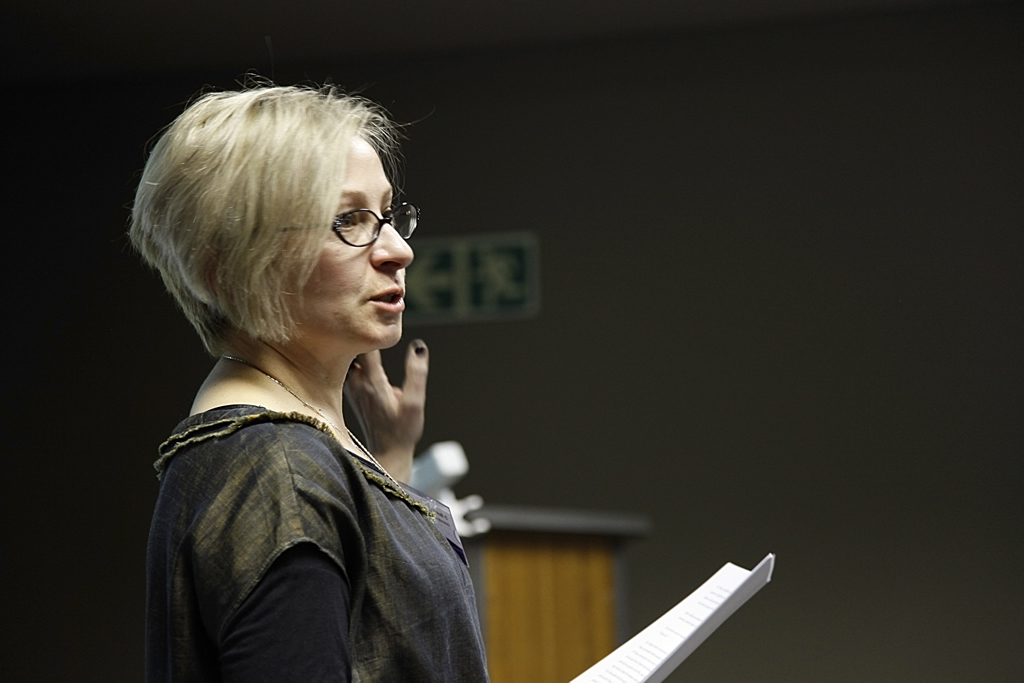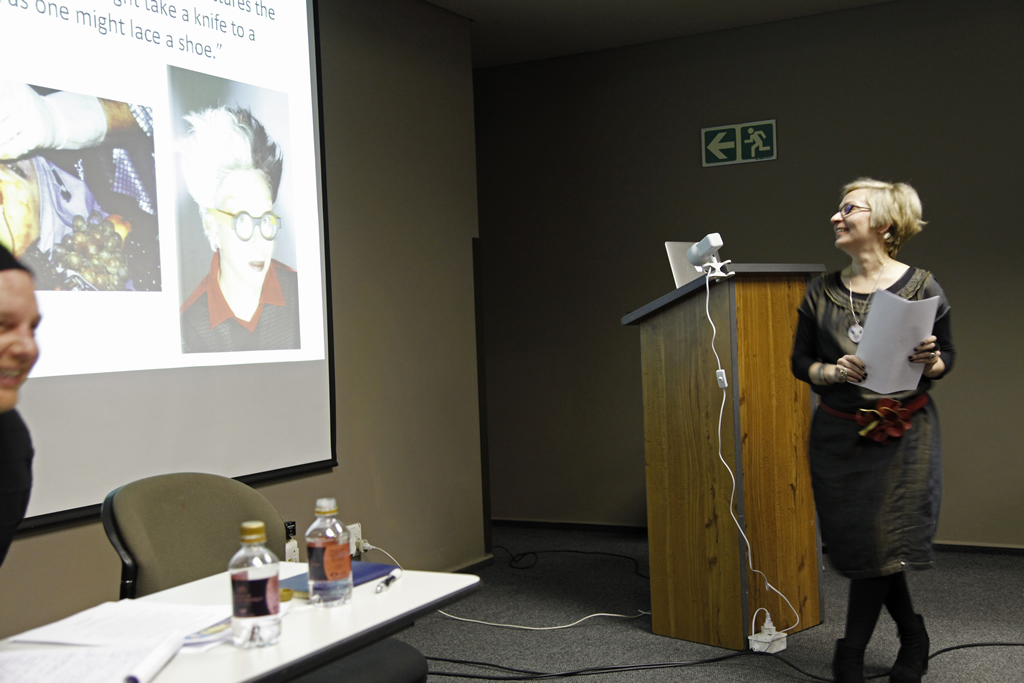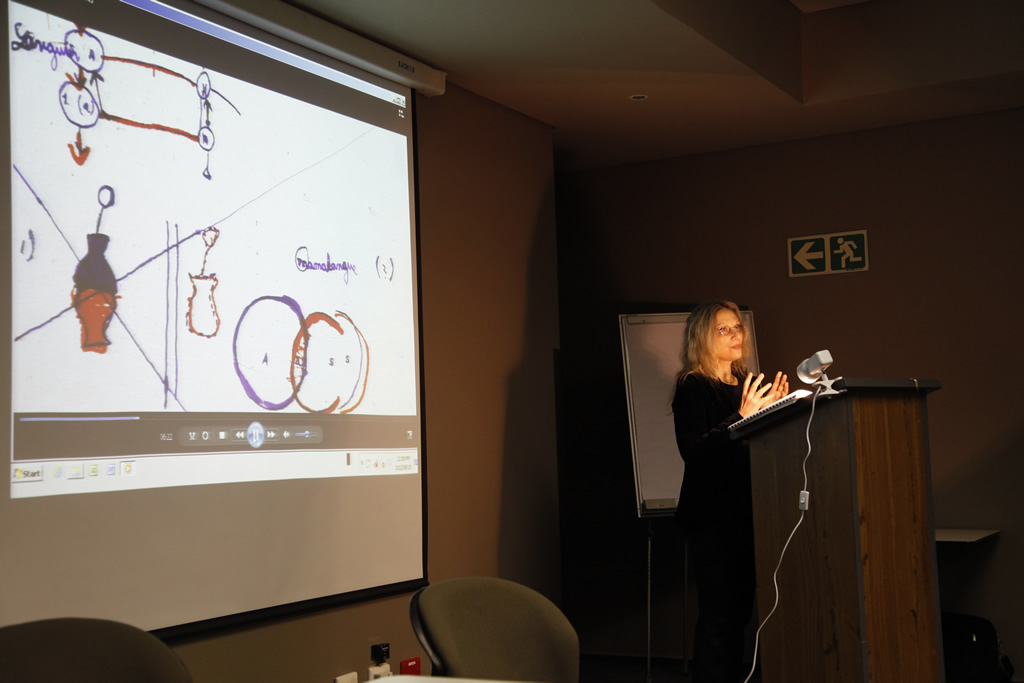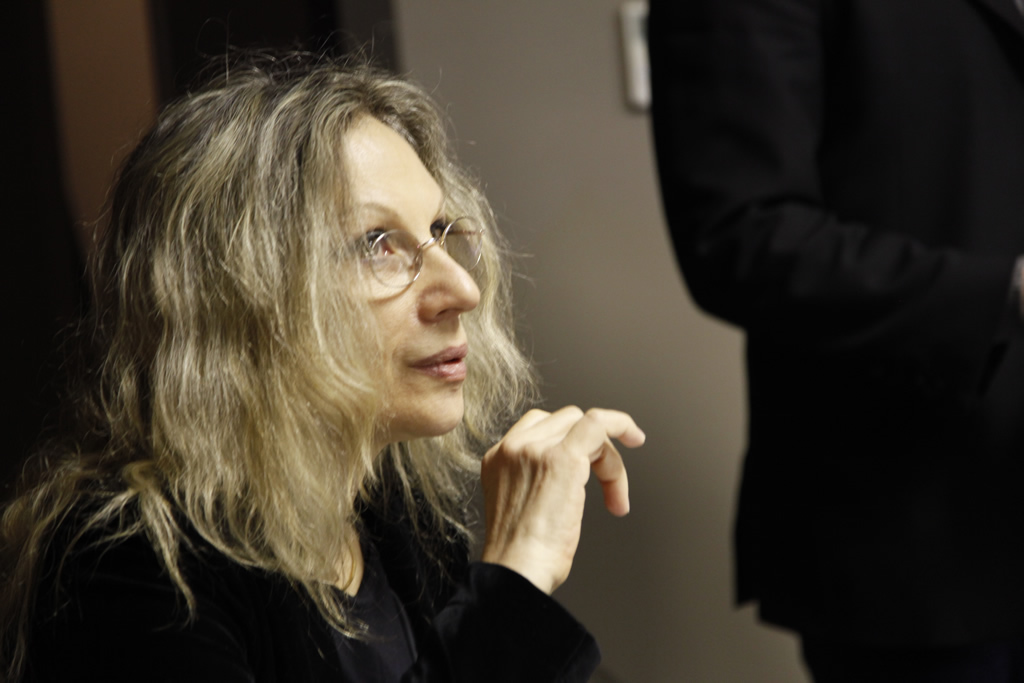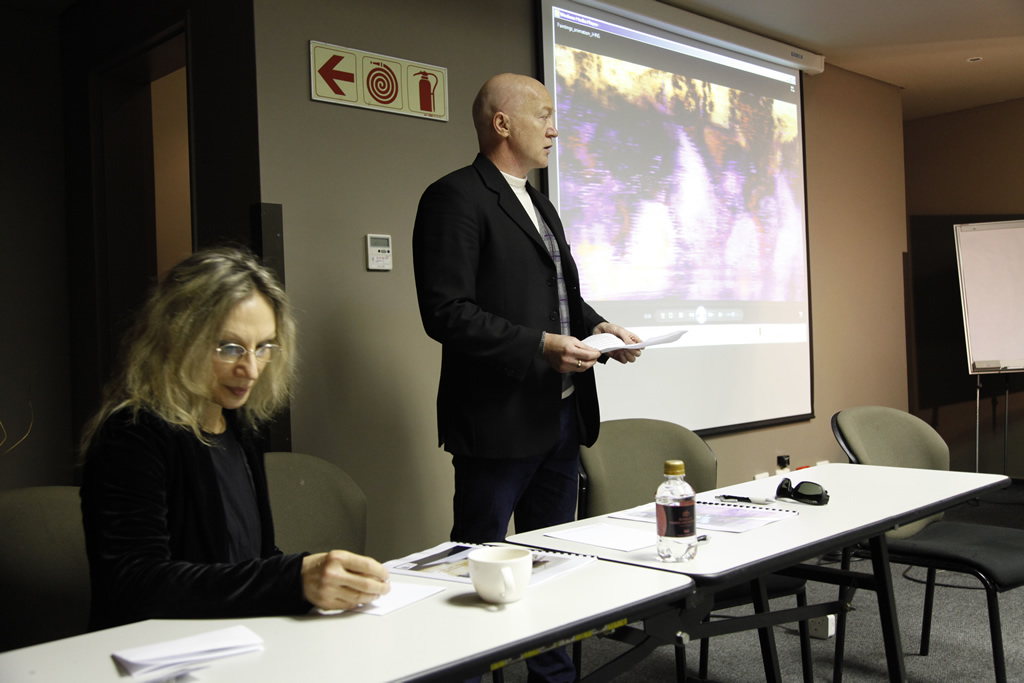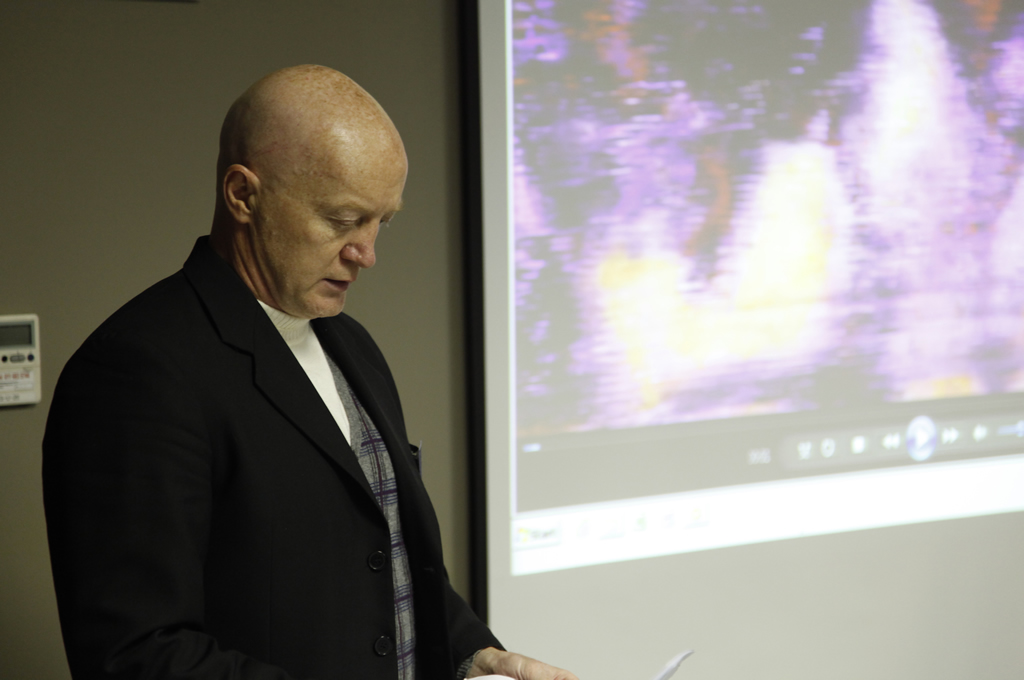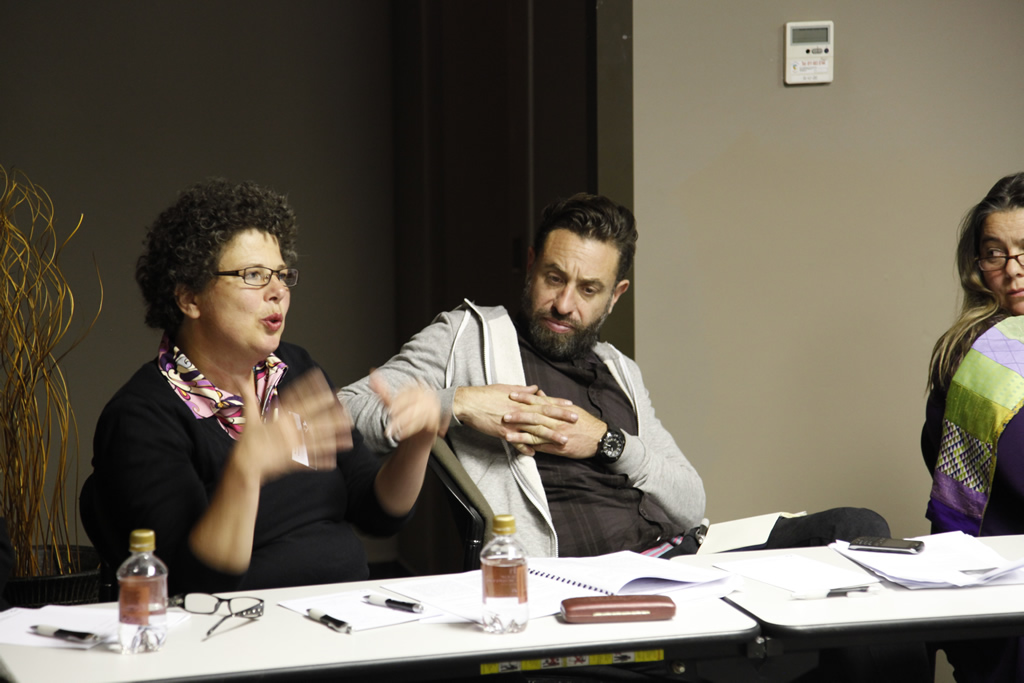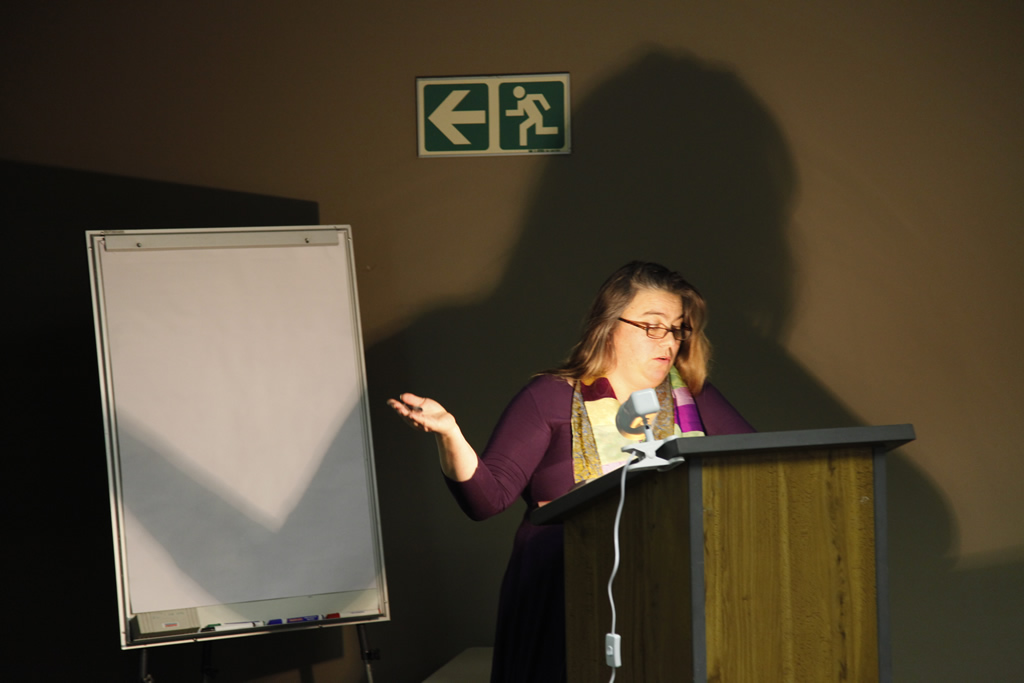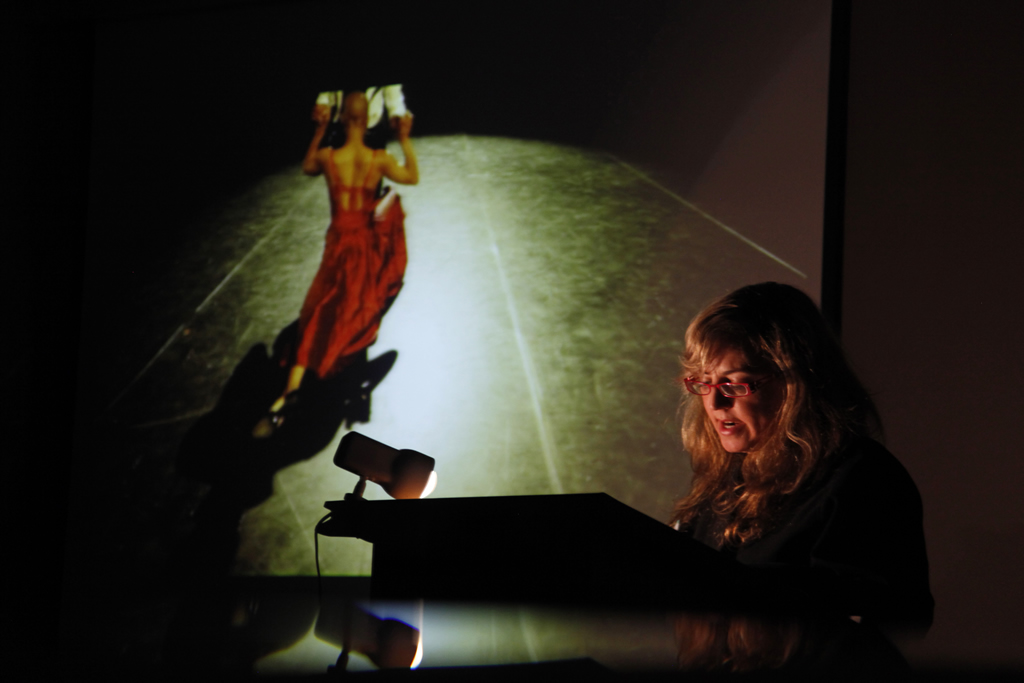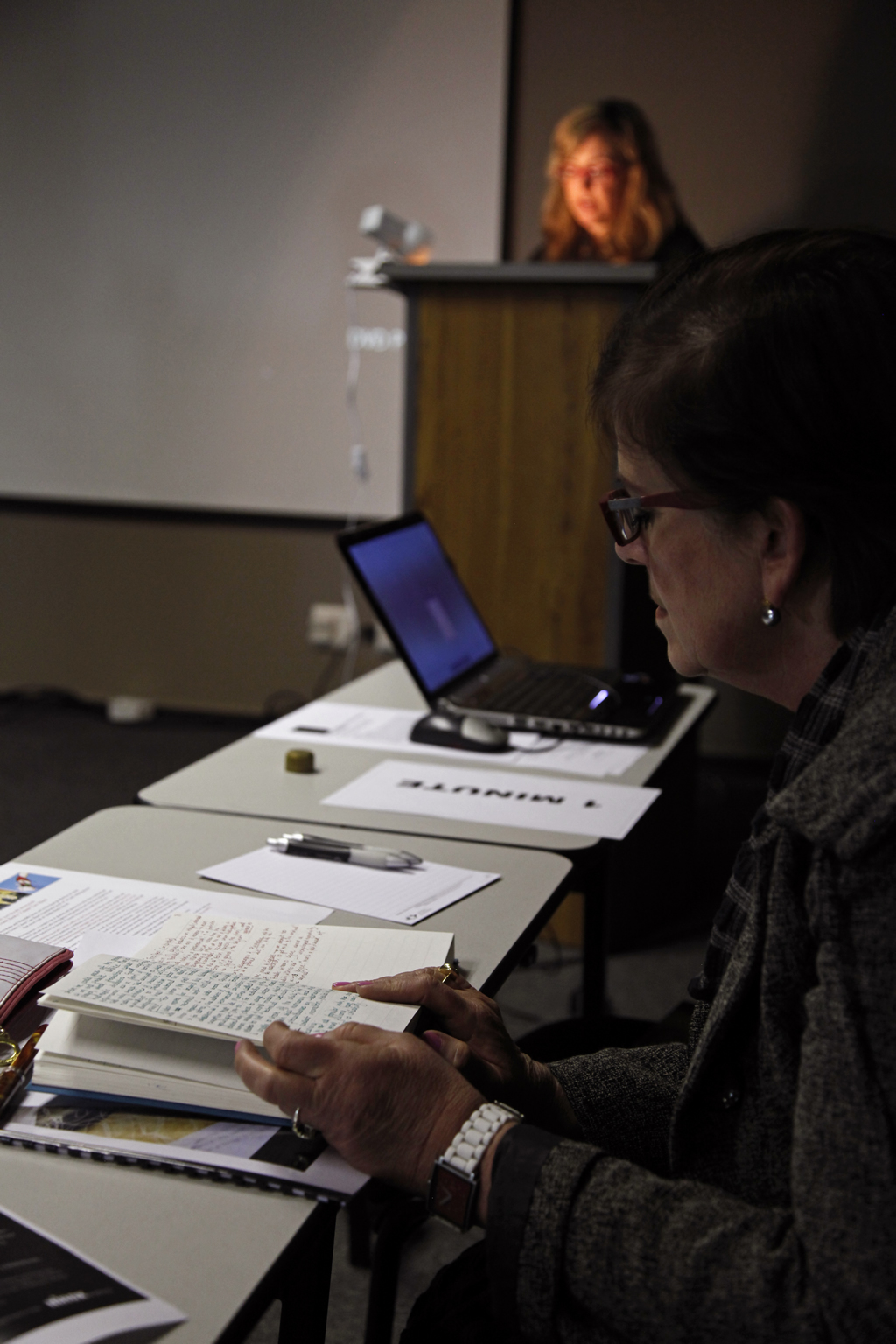POINTURE
POINTING, PUNCTURING, WEAVING AND LACING IN ART PRACTICE AND TEXTUAL DISCOURSE
15 August, 2012 | FADA Gallery, University of Johannesburg
Hosted by the Visual Identities in Art and Design (VIAD) Research Centre, the Pointure: pointing, puncturing, weaving and lacing in art practice and textual discourse colloquium took place at the School of Tourism and Hospitality, University of Johannesburg. It was timed to coincide with the opening of a solo exhibition by Artist/Professor Bracha L Ettinger, titled LICHTENBURG FLOWER AND MEDUSA curated by Leora Farber and Ann-Marie Tully, and the Pointure exhibition, curated by Ann-Marie Tully and Jennifer Kopping.
Artist/Professor Bracha L Ettinger (Marcel Duchamp Chair & Professor of Psychoanalysis and Art at the European Graduate School, Saas-Fee), Dr Meredith Jones (media and cultural studies scholar, the University of Technology, Sydney) and Prof Jane Taylor (Mellon Senior Research Advisor at the University of the Western Cape, Dramaturge for Handspring Trust and Visiting Professor at the University of Chicago) were keynote speakers. Other presenters were from a range of institutions, including University of Johannesburg, University of the Free State, University of Cape Town and the University of Leeds.
Conceptual framework of the colloquium
In his 1978 article, ‘Restitutions of the truth in pointing [Pointure]’ Jacques Derrida (2009 [1978]) explores his prevailing discursive theme of the inside and the outside of a text in relation to Martin Heidegger’s (2009 [1935]) ‘Origin of the work of art’, a philosophical exploration of etymological themes of presence in application to Vincent Van Gogh’s painting, Oude Schòenen (Old Shoes) (Payne 1993). ‘Restitutions’ operates through a set of metaphors: pointure is a key metaphor relating to printing in terms of the “small iron blade with a point, used to fix the page to be printed on to the tympan”, as well as the “the hole which it makes in the paper”. Derrida also links the practice of shoemaking with the term pointure, referring to the stitching-together of the shoe (Payne 1993:228). In his characteristic way of remarkable connections, Derrida ties this term to the act of reading paintings and, in so doing, mobilises a trinity of sub-metaphors: the word lace is the first of these, referring to the lacing of a shoe (Payne 1993:229). Michael Payne (1993) notes that language punctures the canvas, less like a knife and more in the manner of lacing a shoe. Derrida’s ‘Restitutions’ does not miss a further understanding in the word lace. The French word for lace is le lacet, which can also mean trap or snare (Payne 1993:229). In this sense Van Gogh’s empty shoes with open laces represent an empty trap, a vacuum of presence to delve into – where only ghosts can be found. Ghost is then the last metaphor in ‘Restitutions’.
Notions of dispossession, melancholia, unrequited desire, loss, longing and absence spring from this textual ectoplasm. Pointure is framed here as a less reductive textual trope through which to discuss complexes of visual culture involving mediums and approaches, too often simplified into the terms of art/craft binaries. In furthering this less abridged end, Bracha L Ettinger’s ‘matrixial’ theory has been ‘woven’ into the theoretical scope of this conception. Matrixial theory in its intrauterine web of subtle and fragile relations mirrors much of the permeable porosity of Derrida’s notion of pointure (Pollock 2009). Ettinger’s use of the term ‘matrix’, the Latin word for womb, positions this anatomical organ as a rhetorical exemplar to further the feminist critique of psychoanalysis and ‘masculinist’ academic address (Pollock 2009:13). As much of what can be referred to as ‘pointured’ practices have a feminine historical and contemporary force, matrixial theory offers allied theoretical possibilities, as it is not premised on the disavowal of the feminine, and allows for a complex ‘weave’ of subjectivities within visual representation.
Farber, L & Tully, AM (eds). 2012. Pointure. Art South Africa 11(2), Summer:34-51. A 17-page supplement containing 9 peer-reviewed articles; forms a textual output from the Pointure: pointing, puncturing, weaving and lacing in art and textual discourse colloquium.
Sources cited
Derrida, J. 2009 [1978]. Restitutions of the truth in pointing, in The art of art history: a critical anthology, edited by D Preziosi. New York: Oxford University Press:301-315.
Heidegger, M. 2009 [1935]. The origin of the work of art, in The art of art history: a critical anthology, edited by D Preziosi. New York: Oxford University Press:284-295.
Payne, M. 1993. Reading paintings. Reading theory: an introduction to Lacan, Derrida and Kristeva. Oxford: Blackwell:121-233.
Pollock, G. 2009. Mother trouble: the maternal-feminine in phallic and feminist theory in relation to Bracha Ettinger’s elaboration of matrixial ethics/aesthetics. Studies in the maternal 1(1):13.

